Recombinant Human ANP32A protein(Glu2-Lys238), His&GST-tagged
| Cat.No. : | ANP32A-3944H |
| Product Overview : | Recombinant Human ANP32A (NP_006296.1) (Glu 2-Lys 238) was expressed in E. coli, fused with the N-terminal polyhistidine-tagged GST tag at the N-terminus. |
- Specification
- Gene Information
- Related Products
- Case Study
- Application
- Download
| Species : | Human |
| Source : | E.coli |
| Tag : | GST&His |
| Protein Length : | Glu2-Lys238 |
| Form : | Lyophilized from sterile 20mM Tris, 10% glycerol, 1mM DTT, 0.5mM GSH Normally 5 % - 8 % trehalose, mannitol and 0.01% Tween80 are added as protectants before lyophilization. |
| Molecular Mass : | The recombinant human ANP32A/GST chimera consists of 479 amino acids and has a calculated molecular mass of 55.4 kDa. It migrates as an approximately 50 kDa band in SDS-PAGE under reducing conditions. |
| Purity : | > 85 % as determined by SDS-PAGE |
| Storage : | Samples are stable for up to twelve months from date of receipt at -20°C to -80°C. Store it under sterile conditions at -20°C to -80°C. It is recommended that the protein be aliquoted for optimal storage. Avoid repeated freeze-thaw cycles. |
| Reconstitution : | It is recommended that sterile water be added to the vial to prepare a stock solution of 0.2 ug/ul. Centrifuge the vial at 4°C before opening to recover the entire contents. |
| Gene Name | ANP32A acidic (leucine-rich) nuclear phosphoprotein 32 family, member A [ Homo sapiens ] |
| Official Symbol | ANP32A |
| Synonyms | ANP32A; acidic (leucine-rich) nuclear phosphoprotein 32 family, member A; C15orf1; acidic leucine-rich nuclear phosphoprotein 32 family member A; I1PP2A; LANP; MAPM; mapmodulin; PHAPI; PP32; hepatopoietin Cn; acidic nuclear phosphoprotein pp32; leucine-rich acidic nuclear protein; putative HLA-DR-associated protein I; inhibitor-1 of protein phosphatase-2A; cerebellar leucine rich acidic nuclear protein; putative human HLA class II associated protein I; potent heat-stable protein phosphatase 2A inhibitor I1PP2A; HPPCn; PHAP1; MGC119787; MGC150373; |
| Gene ID | 8125 |
| mRNA Refseq | NM_006305 |
| Protein Refseq | NP_006296 |
| MIM | 600832 |
| UniProt ID | P39687 |
| ◆ Recombinant Proteins | ||
| Anp32a-3074M | Recombinant Mouse Anp32a, His-tagged | +Inquiry |
| Anp32a-604M | Recombinant Mouse Anp32a Protein, MYC/DDK-tagged | +Inquiry |
| ANP32A-5466H | Recombinant Human ANP32A Protein, Myc/DDK-tagged, C13 and N15-labeled | +Inquiry |
| ANP32A-3944H | Recombinant Human ANP32A protein(Glu2-Lys238), His&GST-tagged | +Inquiry |
| ANP32A-2803H | Recombinant Human ANP32A, His-tagged | +Inquiry |
| ◆ Cell & Tissue Lysates | ||
| ANP32A-8843HCL | Recombinant Human ANP32A 293 Cell Lysate | +Inquiry |
Case 1: Carrique L, et al. Nature. 2020
Aquatic birds can unleash new pandemic influenza A viruses. These viruses rely on a segmented RNA genome, which is handled by the viral RNA polymerase complex—known as FluPol—in ribonucleoprotein setups. However, the avian FluPolA doesn't replicate well in humans due to unique differences in the acidic nuclear phosphoprotein 32 (ANP32) in both species. A mutation at the PB2 subunit's 627 positions, from glutamic acid to lysine (E627K), helps the virus thrive with human ANP32. Yet, the precise workings of genome replication with ANP32 proteins are still hazy. Through cryo-electron microscopy, we've observed the influenza C virus polymerase (FluPolC) with human and chicken ANP32A. The structures reveal two FluPolC molecules connecting via ANP32A's N-terminal leucine-rich repeat domain, and its C-terminal acidic region interacts with the PB2 627 domains. This might explain how the E627K mutation supports viral RNA replication in mammals, with one FluPol working on replication and the other assembling the viral complex.
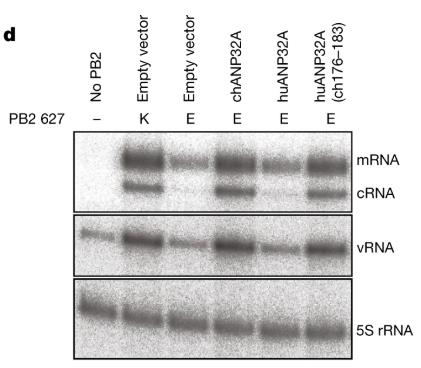
Fig1. Effect of wild-type chANP32A and huANP32A, and huANP32A(ch176–183) on the activity of FluPolA.
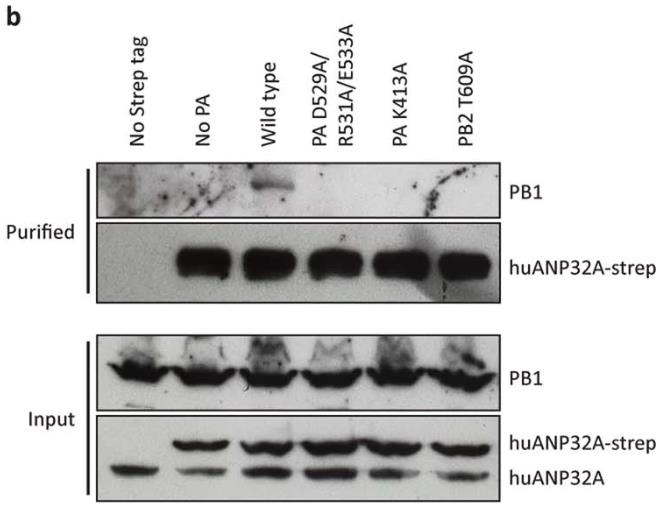
Fig2. Western blot analyses were repeated from n = 3 independent experiments with similar results.
Case 2: Yu LG, et al. J Biol Chem. 2004
During our exploration of how jacalin, a dietary lectin binding to the Thomsen-Friedenreich antigen, impacts cell growth, we uncovered something intriguing in HT29 human colon cancer cells. At a concentration of 30 microg/ml, jacalin quickly causes tyrosine phosphorylation of PHAPI (also known as tumor suppressor pp32). This results in PP2A detaching from PHAPI, boosting its phosphatase activity by about 42% within 10 minutes. Consequently, PP2A fully dephosphorylates MEK1/2 at 10 minutes and ERK1/2 within an hour. If PHAPI is knocked down with RNA interference, these changes don't occur.
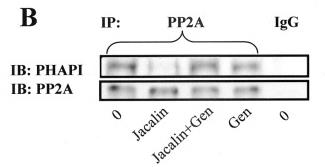
Fig1. The cells were lysed, and 500 μg of protein lysates were immunoprecipitated.
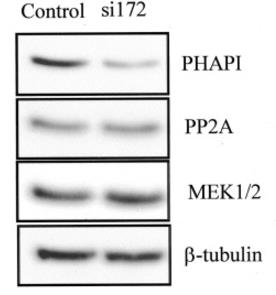
Fig2. HT29 cells cultured in 10% fetal calf serum in Dulbecco's modified Eagle's medium without antibiotics for 1 day before the introduction of 100 nm siRNA together with 8 μl/ml TansIT-TKO transfection reagent.
Recombinant human ANP32A protein has a bunch of uses in both research and industry. In cell biology, it's a key player in studies on cell growth, death, and transcription regulation. In cancer research, ANP32A shows up in various tumors and affects tumor suppression and cell death. When it comes to virology, ANP32A is crucial for influenza virus replication. In drug development, targeting ANP32A might be valuable for treating certain diseases. It's also important in biomarker research, serving as a diagnostic and prognostic tool in disease studies, and has roles in immune-related disease research. All these applications highlight the significant role and potential of ANP32A recombinant protein in diverse scientific fields.
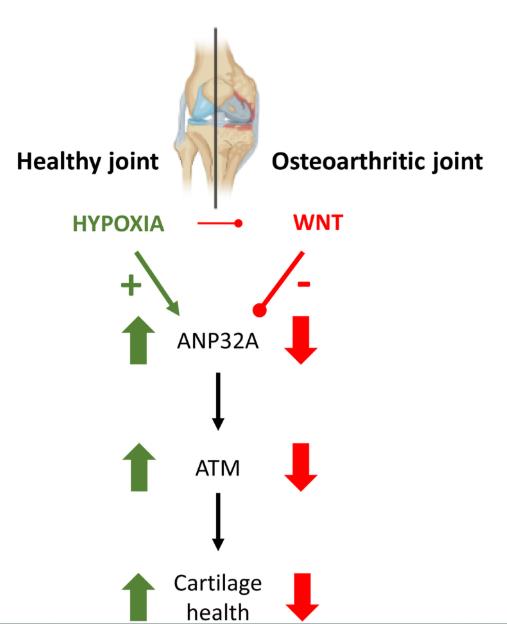
Fig1. Scheme summarizing the effect of hypoxia and Wnt signaling on ANP32A expression, ATM expression and cartilage health. (J Quintiens, 2023)
Not For Human Consumption!
Inquiry
- Reviews
- Q&As
Ask a Question for All ANP32A Products
Required fields are marked with *
My Review for All ANP32A Products
Required fields are marked with *
Inquiry Basket


